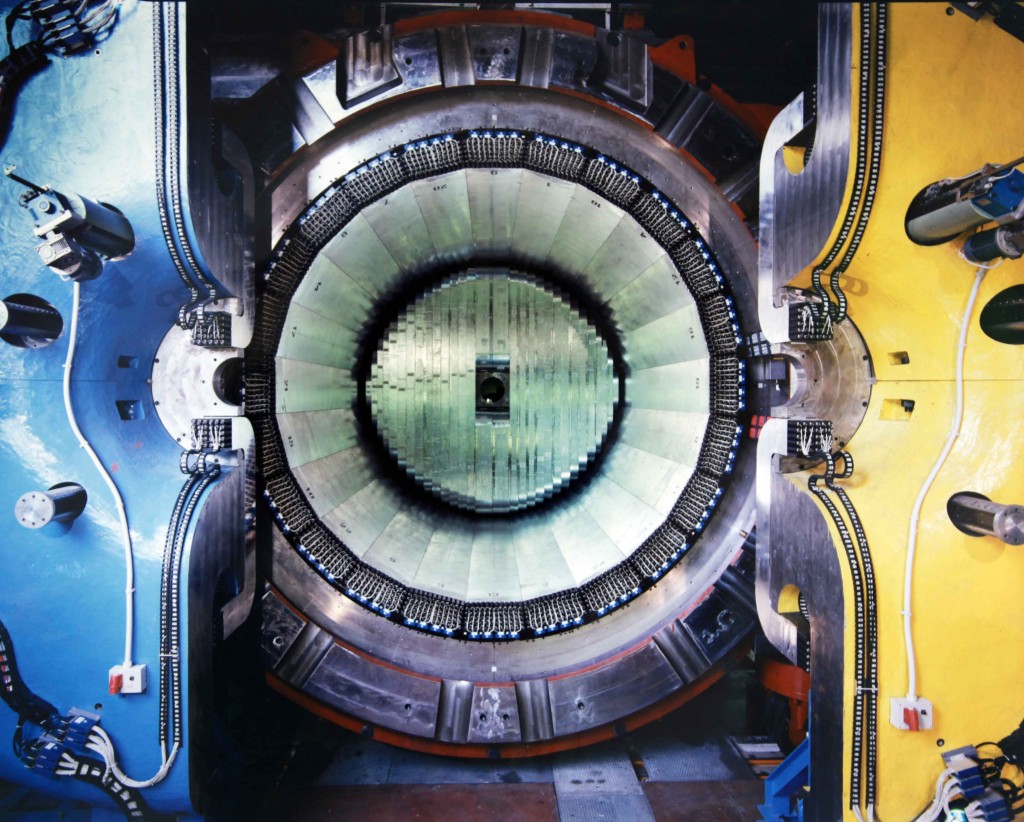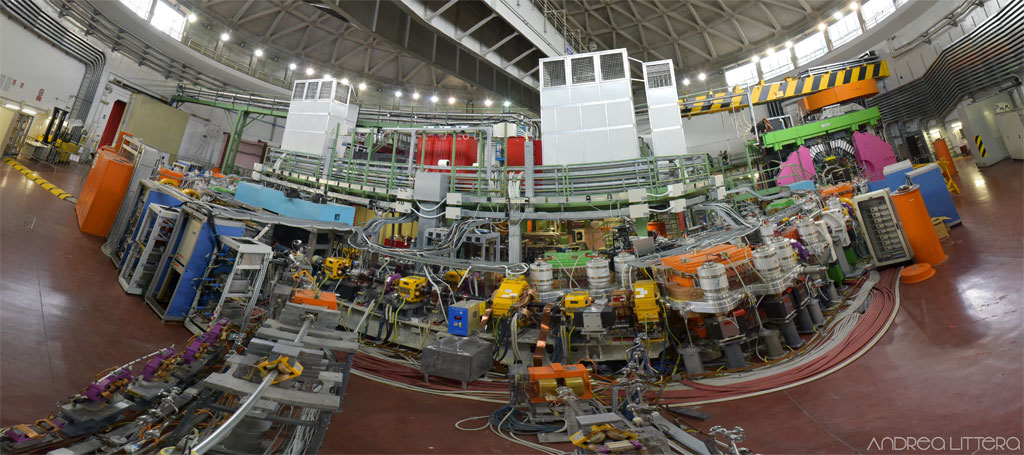The Frascati electron-positron collider is ready again for physics.
Today, DAFNE, the LNF Φ-factory, restarted its operations after the completion of a development phase, started in November 2014 and intended mainly to assess the feasibility of a long term acquisition program.
This phase was positively concluded last June and assessed the machine performance and the feasibility of a new campaign for the data taking of the KLOE-2 experiment.
It was the first time that the “crab-waist” concept – an interaction scheme, developed in Frascati, where the transverse dimensions of the beams and their crossing angle are tuned to maximize the machine luminosity – was ever attempted in the presence of a high-field detector solenoid. This innovative scheme of beam collisions will be employed in the upgrade of the b-factory currently under construction at the KEK Laboratory, in Japan.

The collider has achieved record performances: a peak luminosity of about 2 x 1032 cm-2s-1 and a maximum daily integrated luminosity of 12 pb-1. Thanks to a strong consolidation program, the collider uptime has been very satisfactory, resulting in an integrated luminosity of about 1 fb-1 delivered to the KLOE-2 experiment in less than eight months.
The prospects for the KLOE-2 experiment to start the new data taking campaign and to accomplish its physics program, are now very positive. Some of the exciting challenges of the KLOE-2 experiment include: a test with an unprecedented precision of the fundamental matter-antimatter symmetry and quantum mechanics; high precision studies of some strong interactions processes, and the search for new exotic particles that could constitute the dark matter.
 INFN-LNF Laboratori Nazionali di Frascati
INFN-LNF Laboratori Nazionali di Frascati
